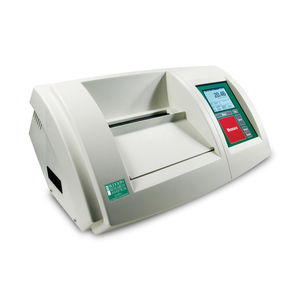
- Metrology - Laboratory
- Laboratory Equipment
- Digital saccharimeter
- Rudolph Research Analytical
- Company
- Products
- Catalogs
- News & Trends
- Exhibitions
Digital saccharimeter AUTOPOL 589

Add to favorites
Compare this product
Characteristics
- Technology
- digital
Description
The 589 saccharimeter from Rudolph Research Analytical provides the same features, measuring speed and accuracy of the AUTOPOL 880 but at the single wavelength of 589 nm.
For 0.01°Z accuracy sugar testing and payment. 589 nm is for countries and applications where lead or other suitable clarifiers are being used. This model works at
589 nm and is not compliant with ICUMSA testing at 880 nm.
Dilution and Cell Length Correction
Whether your sugar analysis requires a 25mm, 50mm, 100 mm or 200 mm cell, whether you use 1/2 normal (13g/100ml), 1/4 normal (6.5g/100ml) or full weight sugar solutions, the AUTOPOL® 589, 880, 880T, and 880 PLUS saccharimeters provide the correct multiplier to display the reading as if the sample were prepared as a 1 normal solution in a 200 mm optical pathlength cell.
Automatic Saccharimeter Calibration
Calibrating the AUTOPOL® is quick and simple. First, place a Rudolph Quartz Control Plate calibration standard on the optical rails and enter the Quartz Plate value in the appropriate window. Second, enter the temperature to correct the measurement to either the ICUMSA standard temperature of 20°C or the Tropical reference temperature of 27.5°C. Third, press 2 buttons and calibration is complete. (See Technical Bulletin 913 for more details on Rudolph Calibration Standards)
Automatic Temperature Correction
All AUTOPOL® Digital Saccharimeter models have a temperature probe in the measurement compartment. The probe can be inserted into all 14 style, 40T style, 41T style and 33 style measurement cells.
Catalogs
Saccharimeter Autopol 589
6 Pages
Autopol IV
8 Pages
Exhibitions
Meet this supplier at the following exhibition(s):

Other Rudolph Research Analytical products
Saccharimeters
*Prices are pre-tax. They exclude delivery charges and customs duties and do not include additional charges for installation or activation options. Prices are indicative only and may vary by country, with changes to the cost of raw materials and exchange rates.







